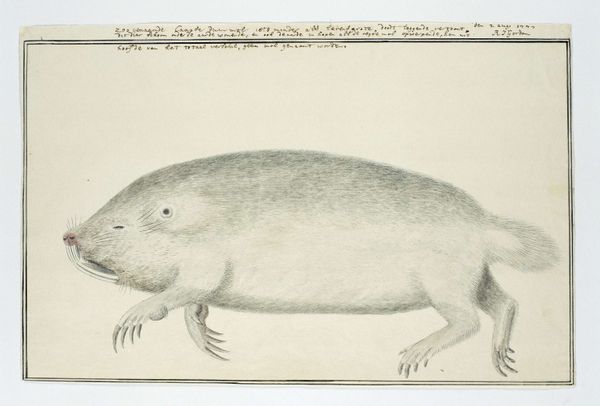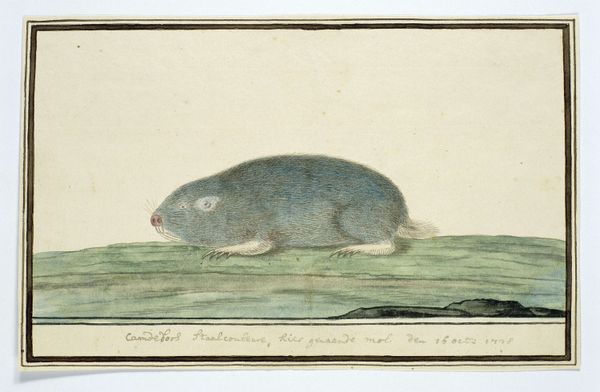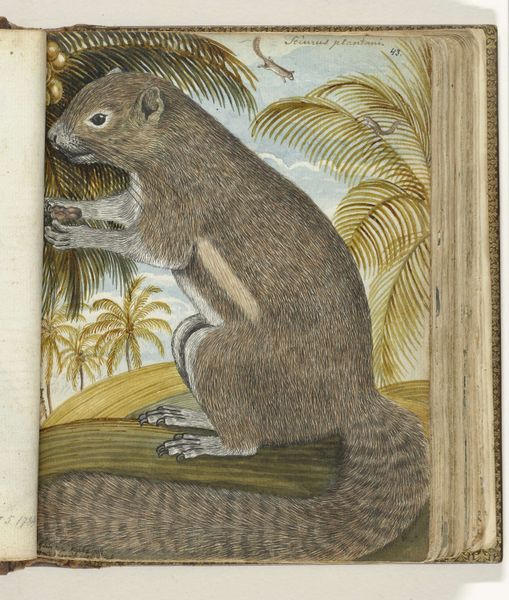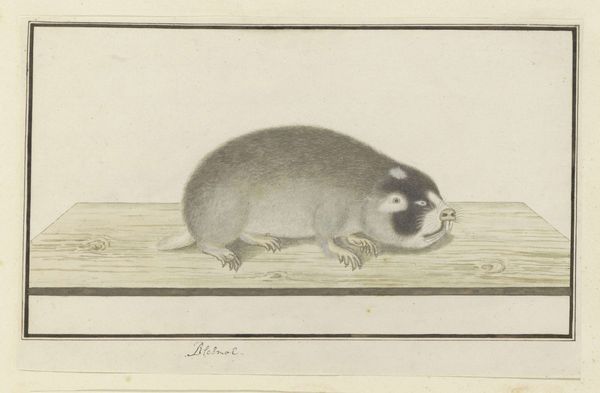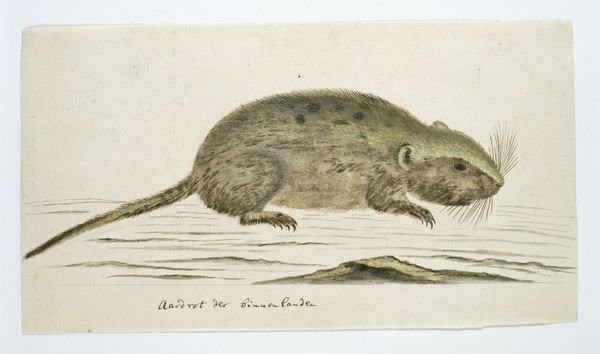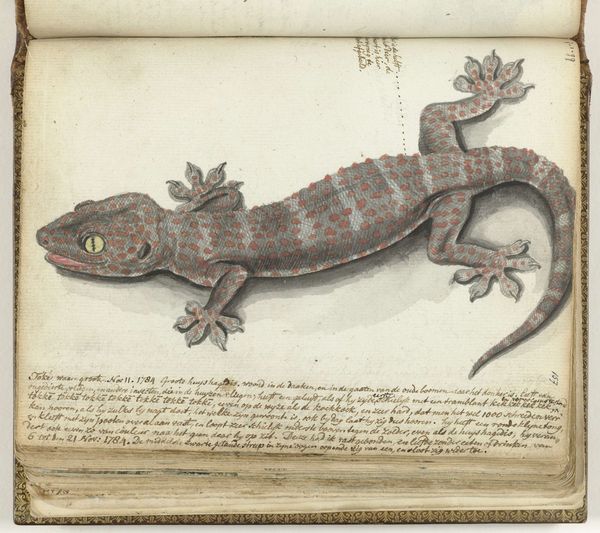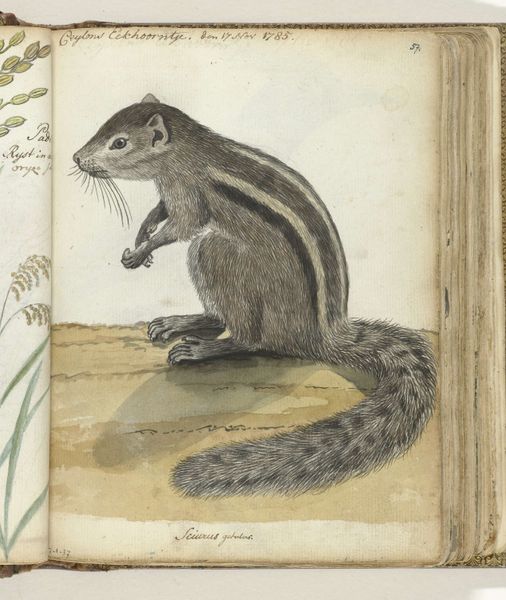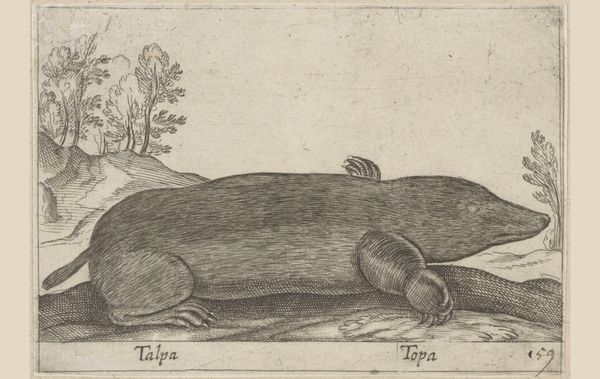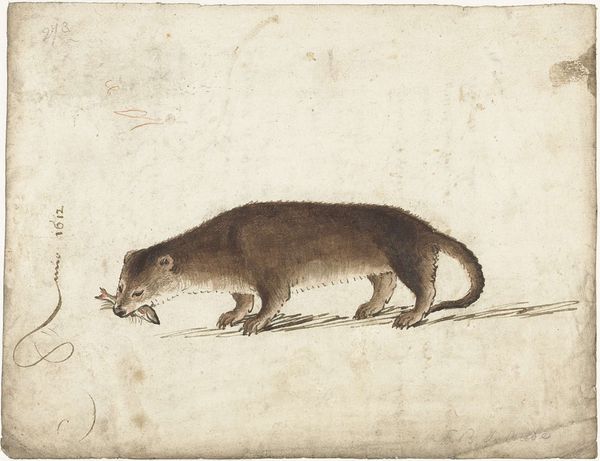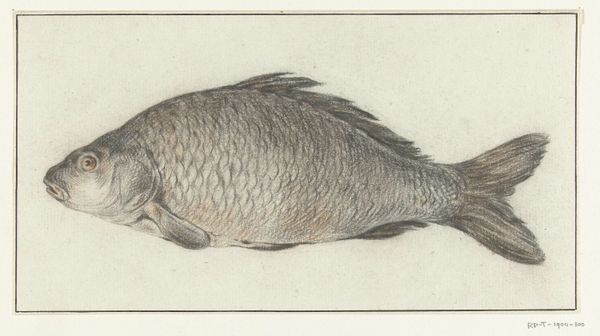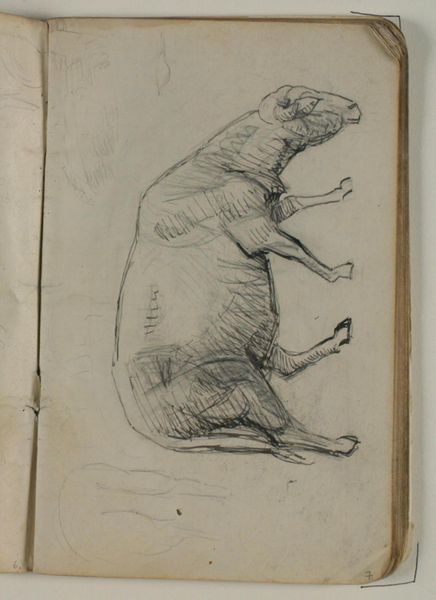
drawing, watercolor
#
portrait
#
drawing
#
water colours
#
animal
#
watercolor
#
coloured pencil
#
mixed media
#
watercolor
Dimensions: height 195 mm, width 155 mm
Copyright: Rijks Museum: Open Domain
Editor: Here we have Jan Brandes' "Kaapse mol," possibly from 1786-1787. It seems to be rendered in mixed media, including watercolor. I find the illustration incredibly detailed, particularly the texture of the animal's fur, and I'm struck by the rather scientific approach in capturing the mole's physical characteristics. What stands out to you? Curator: The interest lies primarily in Brandes’ rendering of form through careful manipulation of color and light. Note how he creates depth through the subtle gradation of brown and grey washes, effectively simulating the texture and volume of the mole. Brandes clearly emphasizes capturing the physical form, but where is he drawing the viewer's eye, and how? Editor: I notice how the detail in the head draws my attention – particularly the mouth and the exposed teeth. And, generally, I'd say the contrast in the claws emphasizes them more. Curator: Precisely. The crispness of line and clarity of color used there command our visual attention. He contrasts the coarser renderings found in the fur to elevate the points you observed. Would you agree that such strategic placement allows Brandes to skillfully manipulate the formal elements of line, colour, and light, constructing a compelling representation within the two-dimensional plane? Editor: I do, the focus on form becomes very clear now. It makes you appreciate how well the rendering of this animal uses all of the artist's tools! Curator: Exactly. By analyzing the formal qualities of the artwork, we can begin to understand the artist's intent. The careful handling of these formal devices elevates the depiction beyond simple representation. Editor: I definitely have a greater appreciation for the technical skills required in this artwork! Thanks for your insights!
Comments
No comments
Be the first to comment and join the conversation on the ultimate creative platform.
